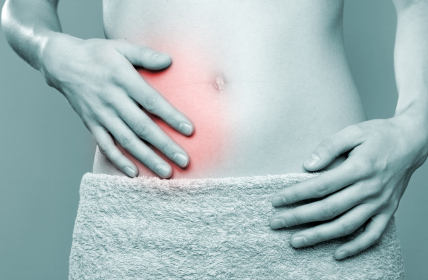 In an extended emergency where medical professionals will not be readily available to us, we will need to rely upon our skills and our training in order to care for anyone who falls in harm’s way. Over the weekend, my child had sudden and severe abdominal pains that left her unable to walk. Fearing the worst, I went on high alert and took her to the emergency room where she was assessed for a possible appendicitis. Luckily everything checked out alright, but I was reminded of how important it was to be familiar with and how to handle emergency situations when they occur.
In an extended emergency where medical professionals will not be readily available to us, we will need to rely upon our skills and our training in order to care for anyone who falls in harm’s way. Over the weekend, my child had sudden and severe abdominal pains that left her unable to walk. Fearing the worst, I went on high alert and took her to the emergency room where she was assessed for a possible appendicitis. Luckily everything checked out alright, but I was reminded of how important it was to be familiar with and how to handle emergency situations when they occur.
1 person out of 10 will need an appendectomy during their lifetime. Although most appendicitis cases occur during the teenage to young adult years, young children and adults have been known to have appendicitis. Appendicitis usually occurs when a firm piece of stool blocks the pea-size opening of the appendix, allowing bacteria to flourish inside. Knowing the symptoms to look out for can help you get the medical care you need before the symptoms exacerbate.
Some symptoms include:
- Persistent or worsening symptoms.
- The pain stays in one portion of the abdomen. Pain on the right side could be an appendicitis.
- An oral temperature above 102 F (38.8 C) develops.
- Repeated vomiting occurs.
- Blood is being passed in stools (red, dark red or black).
- Persistent vomiting for 24 hours (cannot keep anything down) or blood is vomited.
- There is a swollen or bloated abdomen.
- Dizziness develops.
- Your child pushes your hand away or screams when their belly is touched.
- You notice extreme irritability in infants or weakness in older children.
- You child develops new or severe problems or becomes dehydrated.
If these one or more of these symptoms occur, fear the worst and seek medical attention immediately. The only way to cure appendicitis, if it is in the late stages, is to remove the appendix with surgery. However, it has been suggested that if detected on time, it can be cured naturally, using home remedies.
Preventing and Curing Through Natural Means
Getting more fiber in your diet can be a natural way to prevent an appendicitis from occurring. Since fiber absorbs water, a high-fiber diet causes the stool to become larger, softer, and less likely to break apart. This prevents stray particles from blocking the appendix and helps the stool to move faster through the digestive tract.
According to the home remedy website ILoveIndia.com to naturally cure an appendicitis:
- The best home remedy for appendicitis would be a mix of 100 ml cucumber juice, 100 ml beet juice and 300 ml carrot juice. Intake this juice regularly, two times a day.
- Buttermilk helps in curing chronic appendicitis. A liter of buttermilk should be consumed, on an everyday basis, for about a fortnight.
- In a liter of cold water, add 1 tsp. fenugreek seeds and let it boil. Now, strain the water and have it while it’s still warm, but not too hot. This would prove effective to cure appendicitis naturally.
- Appendicitis can also be cured by having green grams. 1 tsp. of sprouted green grams, twice or thrice a day; will prove to be worthwhile in treating appendicitis.
- Include coriander juice, radish juice and spinach juice in your regular diet. They will help treat appendices problem.
For people who suffer from fever, along with appendicitis, decoction of the basil leaves will prove beneficial. Steep the leaves in boiling water and let them stand for 5 minutes. Strain it and your decoction is ready. - Ginger helps in those appendicitis cases where the patient also has the tendency to vomit. Add a pinch of rock salt to 1 tsp. of ginger juice and drink it. Alternatively, you can store raw cut pieces of ginger, with some rock salt, in a bottle and have it with your meals.
- Ginger and turmeric act as a good combination for treating appendicitis. They can be taken in a raw or powdered form. It reduces the pain and swollenness resulting from appendicitis.
To Conclude
When it comes to abdominal pain in children you want to take it seriously. Aside from bouts of constipation, children should not have severe pain in this region of the body. Not having the skills or medical training to properly assess the child’s illness can make a parent feel absolutely helpless. That being said, make a commitment to develop some emergency medical skills or purchase some reference materials to turn to when your child needs to rely on you the most. After all, we are prepping today to care for tomorrow’s problems. And, we can all agree that we never know what tomorrow may bring.
This article is for informational purposes only.

Another assessment tool for appendiitis in children is the hop test. Ask the child to hop on one foot. If they have trouble due to pain…appendicitis is highly suspected.